Attracting Orioles
Central Illinois is the summer home for two oriole species, Baltimore (males are bright orange) and Orchard (males are rust orange).
They typically arrive in late April or May, some pairs staying through mid-late summer, with a second wave of activity from fall migrants in August and September. For a 3-4 week period when they are traveling north in the spring, they can be seen both in town and in rural areas. However, they prefer to spend most of the summer breeding season in more rural habitats or along lakes and waterways, ideally with a mix of woodlands or old tree lines and open pasture or grasslands.
A large number of the orioles we see in May are just passing through on their way north, with a smaller number staying locally in areas with their preferred habitat. By June, the summer residents who have stayed are busy nesting and may be turning more to insects to feed their young, so people who feed live mealworms have the best chance of seeing them at this time of year. Once babies are out of the nest sometime in July, birds may return to the feeders more heavily to dine on the jelly and fruit. In August and September, orioles who had bred farther north will start passing back through as they head south, though since fall migration spans a longer time frame than spring migration, the sightings at feeders may be less concentrated.
Orioles will come readily to feeders such as those below (we also have many others models in stock).: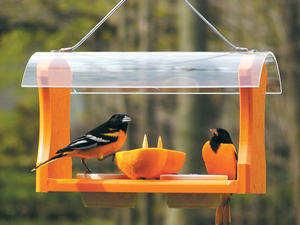
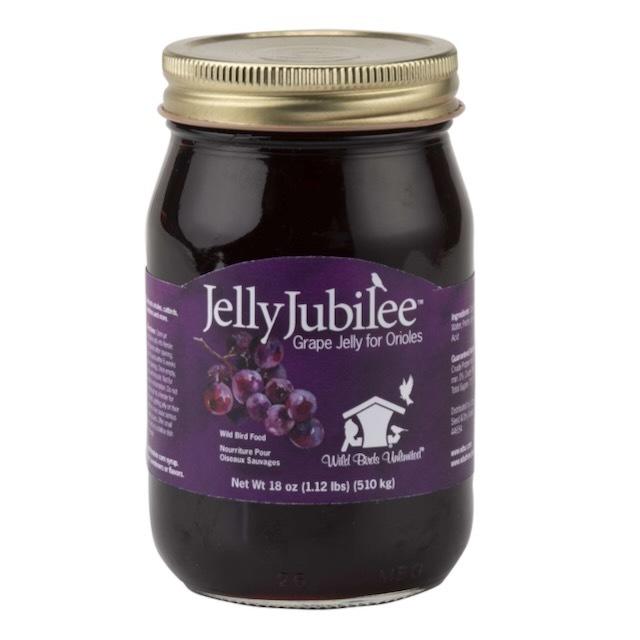 Fruit, Jelly, and Mealworm Feeder - Made in the USA
Fruit, Jelly, and Mealworm Feeder - Made in the USA
Shop online or in store
Our most popular feeder allows you to serve orioles' three favorite foods: jelly, mealworms, and fruit.
(Keep feeders clean and replace foods every 2-3 days to prevent them from spoiling.)
*A note about jellies: While almost any fruit flavors can be used, we encourage you to inspect ingredient panels and serve jellies that contain only natural fruit juices and sugars, not corn syrup as a main ingredient. We stock three bird-friendly (no corn syrup) varieties of jelly. They all get great reviews from the birds! Shop online or in store
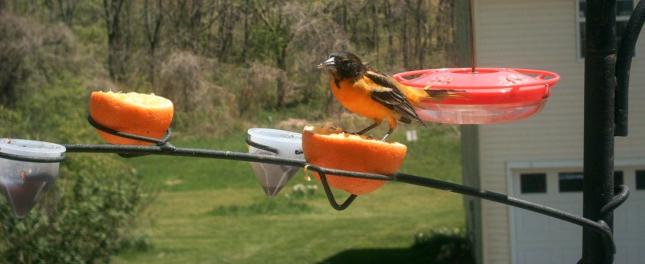 Jelly Dishes and "Branch" Feeders
Jelly Dishes and "Branch" Feeders
Shop online or in store
Jelly dishes come in hanging or pole mount models and can be used for jelly, mealworms, or fruit slices.
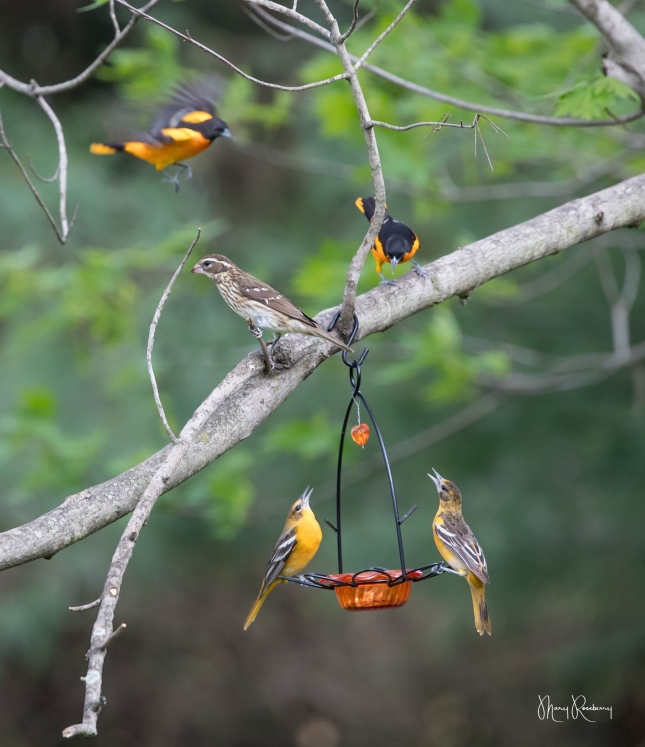
Jelly Dish with Fruit Spikes
Shop online or in store
This is a great, economy priced feeder for when you just aren't sure if you can attract orioles and don't want to make a bigger investment. It is also ideal for serving many other treat foods to other species. An optional rain shield is available.
photo compliments of Mary Roseberry
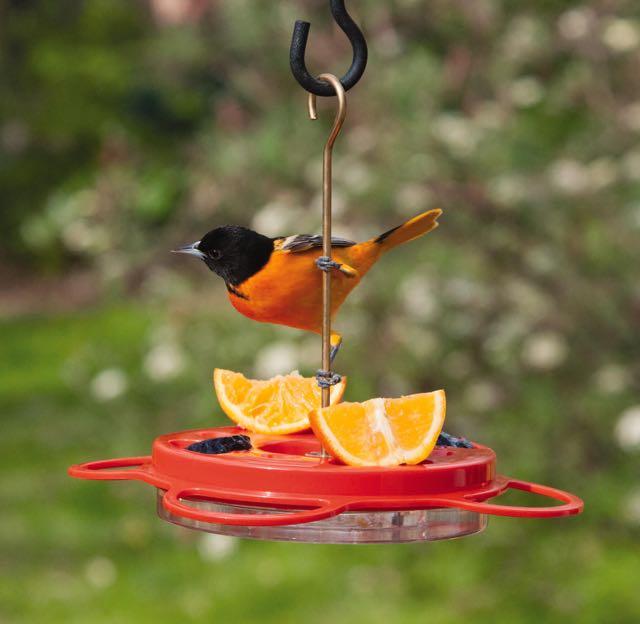 Nectar, Jelly & Fruit Feeder - Made in the USA
Nectar, Jelly & Fruit Feeder - Made in the USA
Shop online or in store
In addition to the jelly and fruit, some orioles like nectar, so this feeder allows you to serve all three.
(Nectar recipe - make a 1 part sugar : 4 parts boiled water solution. Never add food coloring. Wash feeder and change nectar 2-3 times per week to keep nectar from spoiling.)
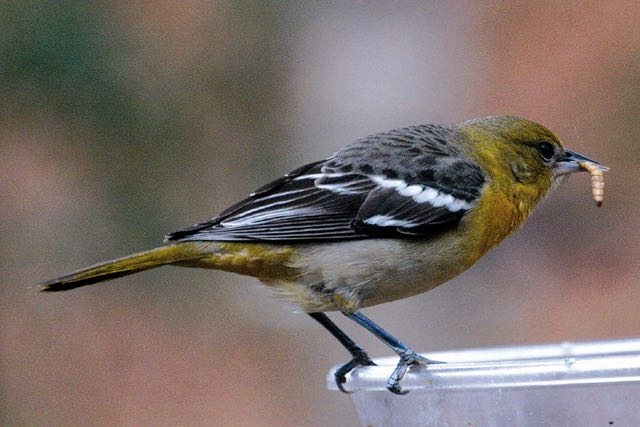 Mealworms
Mealworms
Available in-store or shop online for curbside pickup only.
Live insects are the primary food for baby orioles and many customers report the adult Orioles come to feeders even more often if they can carry "take-out" back to the babies in the nest.
Once you have your oriole feeder, proper placement is important. We find the highest success rate when the feeders hang from shepherds hooks in an open area, rather than in or under a tree. This makes the feeder most visible to the birds. Avoid placing the feeder alongside other busy feeders where too much activity could intimidate the orioles.
Change the foods and wash feeders 2-3 times a week to keep the feeding station fresh and healthy.

